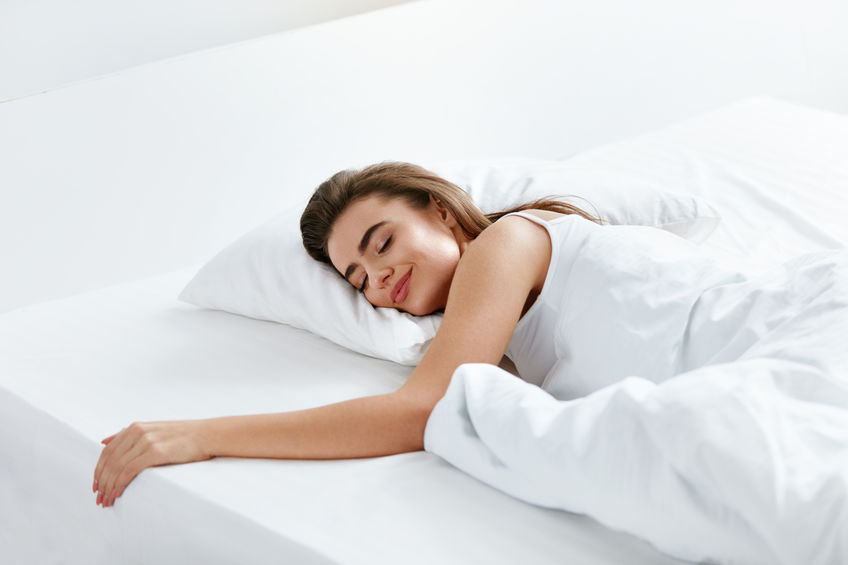×
The Benefits Of Napping
- Danielle L’Ami

When one thinks of naps, often the image of a sleep deprived parent, who desperately needs a nap themselves is trying to put their nap-resistant child down for their nap. Ironically, children, who need lots of sleep often resist naps the most, which can then impact parents. As a matter of fact, naps serve a very specific purpose that are often needed beyond childhood. But did you know that different nap types serve different purposes. But before you close your eyes just yet, let’s take a deeper look into naps and their benefits.
The Benefits of Napping
According to sleepfoundation.org, just as hunger reminds us to eat, sleepiness reminds us to sleep. This is called the “Homeostatic Sleep Drive.” We feel this thanks to the changes in light intensity and color which affects our suprachiasmatic nucleus (SCN) (our master clock). The SCN interacts with our hypothalamic-pituitary axis (HPA) which regulates hormone production of melatonin, cortisol, growth hormone, ghrelin, leptin and a non-hormone adenosine, These hormones fluctuate throughout the day and based on lifestyle and light cues signals sleepiness of wakefulness (1).
The desire to sleep is not limited to night time hours. Maybe it’s because we didn’t sleep well the previous night, we are stressed, sick, or just need to rest our eyes. Having a nap can help aid in the sleepiness we are feeling, improve our learning, regulate our emotions, and even improve our memory. And as sleep helps to naturally raise a man’s testosterone levels, as seen in our testosterone post, a nap surely couldn’t hurt in this department as well.
With the widespread use of blue lights from the work place to our phones, our eyes are often taxed by the excessive exposure to blue light and not enough pink, orange or red hues. According to laserforeyes.com, simply resting our eyes sends a signal to our bodies to take a break. If your brain is in hyperactive mode, closing your eyes can help reset your brain, improve alertness, and re-set your mind. If you stare at a screen for long periods, your eyes might be drier and closing your eyes or a nap can help restore some of the moisture.
While sleep plays a critical role in immune health, napping too can help boost immune systems according to Mentalfloss.com. When we are regularly sleep deprived (think <7 hours of sleep consistently), our immune system suffers as well. However, research found that individuals who were sleep deprived, but napped, normalized their cytokines (inflammatory proteins) and norepinephrine (catecholamine that helps your heart pump harder) to a level seen with people who weren’t sleep deprived.
Additionally, naps have been shown to help with better focus and memory. Another study found that those who took naps, compared to those who didn’t, improved their mental alertness
Often people will suffer from difficulty falling asleep at night or insomnia if they take a nap. So, if you find you cannot get through your day without a nap, but can’t sleep at night, you may have to reconsider the type of nap you are having.
The Different Types of Naps
Sleepfoundation.org gives some great descriptions of the different types of naps. There is the “recovery nap,” something to consider if you have had interrupted sleep the night before. But if you are preparing for a loss of sleep, such as working a night shift, you may consider a “prophylactic nap.”
Maybe you are someone who just loves to take naps? This is known as an “appetitive nap.” Young children, from babies to preschoolers, need naps to help with their brain development. These naps are scheduled and are known as the “fulfillment nap.” Sleep, including naps, is overall very important for brain development as we discuss in our 7 ways to improve your brain health post.
Lastly, there is the “essential nap,” which is what you take when you have a greater need for sleep. Maybe you are sick with a cold or just underwent major surgery. Your body needs to heal and thus needs more sleep.
The Different Lengths of Naps
Expanding further on nap types, there are also varying lengths of naps. Scienceofpeople.com divides the lengths into four categories. The first may be the most widely known, the “power nap.” This is the shortest and is only meant to last 10-20 minutes to give you a quick burst of energy.
The next is the “grogginess nap.” If you nap for a longer period of time, usually greater than 30 minutes, your brain will still be sleepy and it may take a bit to come out of it. This is not a great option if you need to be careful or attentive at your job.
If you have more time, you may like the idea of the “short-term nap,” which lasts about 60 minutes. In this time, our brain waves have a chance to slow down and we may be able to remember facts, names and faces, and even places better.
Last is the “REM nap,” which lasts longer than 90 minutes. It is called this because our brains will achieve REM (rapid eye movement) once one has been asleep for a longer time. Since your brain dreams during this time you may find you are better able to tap into your creative juices and are more adept at learning a new skill.
Long naps can aid in preventing sleep inertia, that groggy state that shorter naps can give you. They are best to have in the afternoon to hopefully not affect you falling asleep at night. This is maybe why many cultures nap in the afternoons.
Different Cultures and Their Naps
Sleep.org offered some great insight into different cultures and how they have included naps in their daily schedules. Probably one of the most well-known is Spain, as mentioned above, with their afternoon siesta.
The Italians have what is called a “Riposo.” During this time, they have a leisurely lunch, avoid the heat and take a nap afterwards. Even shops are closed during this time to make this time possible.
The Japanese have what is called “Inemuri:” the idea of being present while asleep. You can practice this throughout the day, whenever you find a break is possible in your schedule. This could be while you are studying, on public transportation, or even at the office. In practice, it is taking a nap when you can.
In Scandinavian countries where they are known for their cold and dark winters, they have the “Scandinavian winter nap.” Countries like Norway, Denmark, and Finland, have their children nap outside, even in the winter. They believe this helps them to acclimatize to the colder climate and that they sleep better outside.
Naps come in all types and lengths. They can play a valuable role in our immune system and help us with our emotions and memory. From young to old, naps maybe just the secret to helping us feel happier and healthier.
